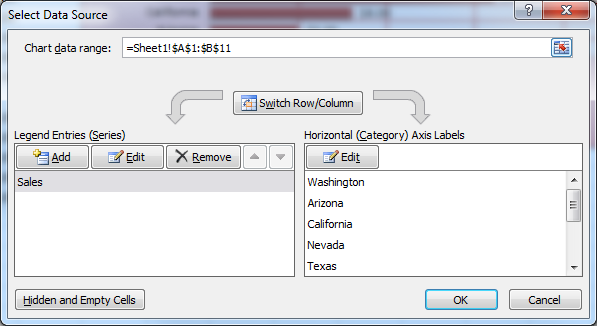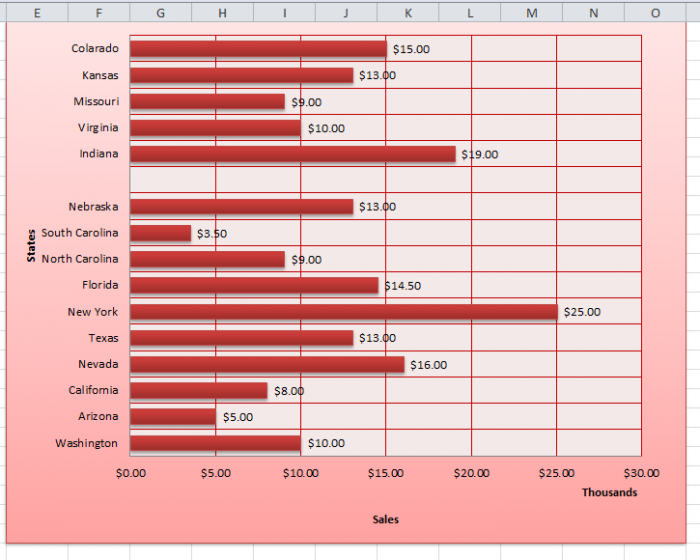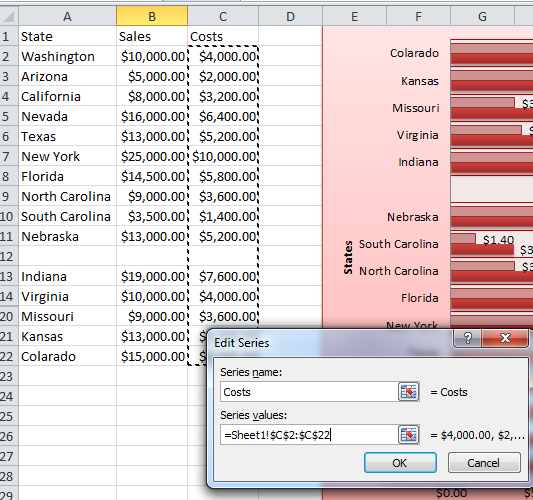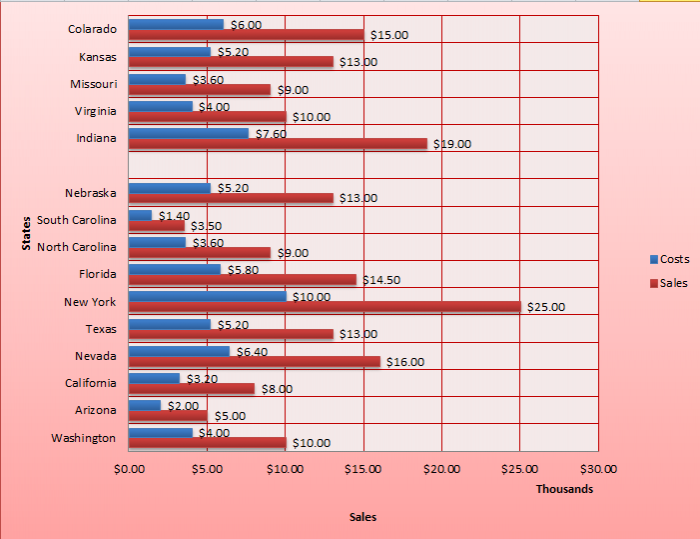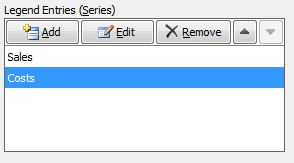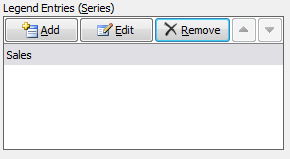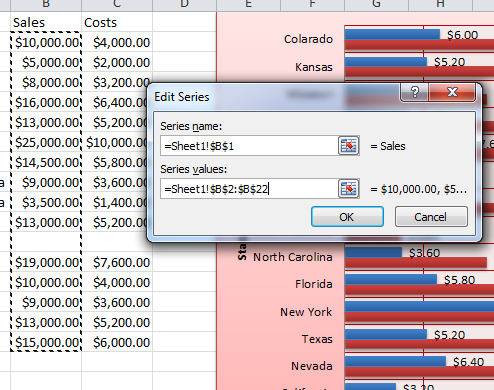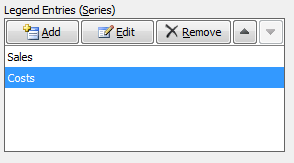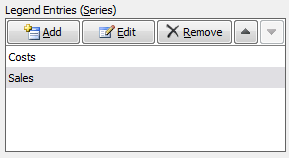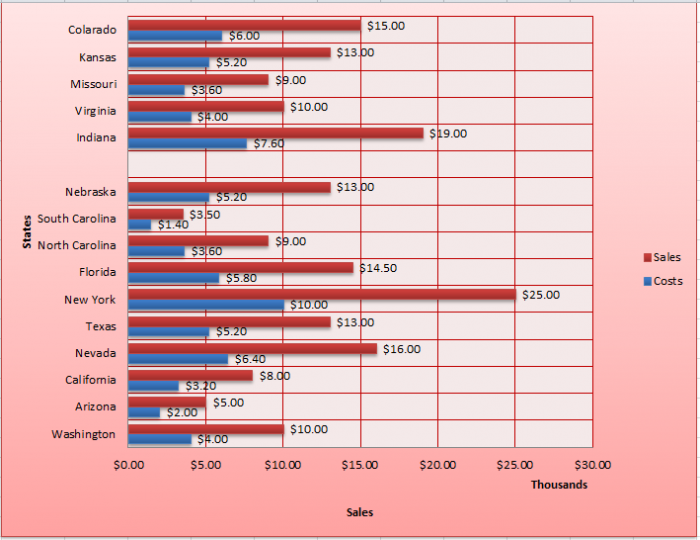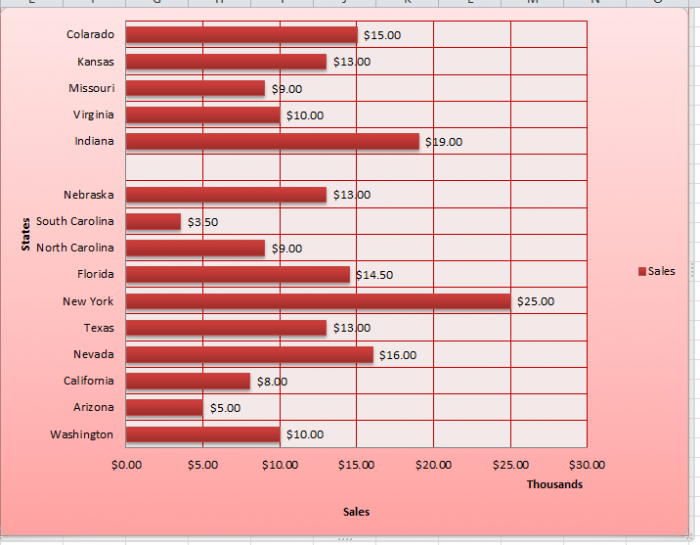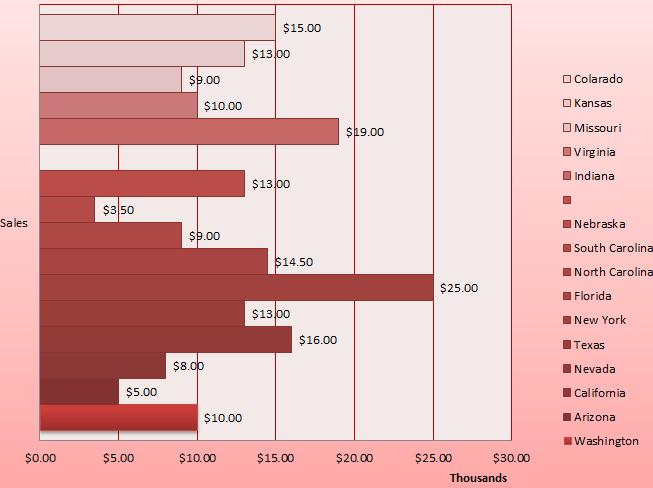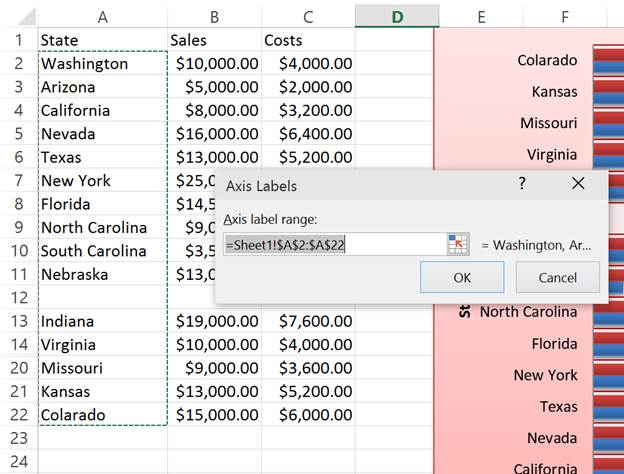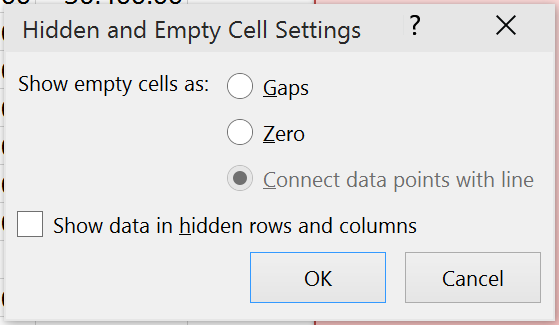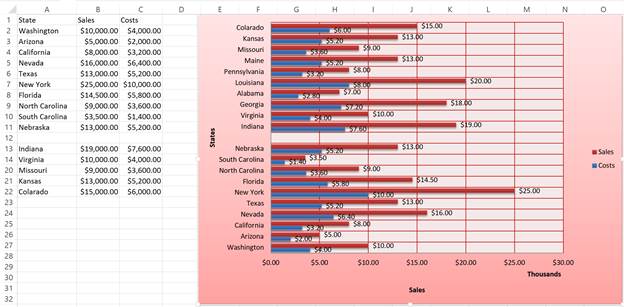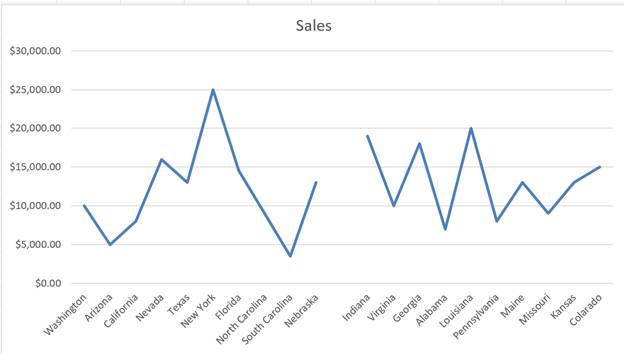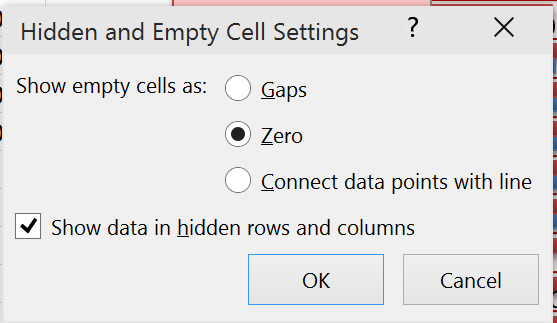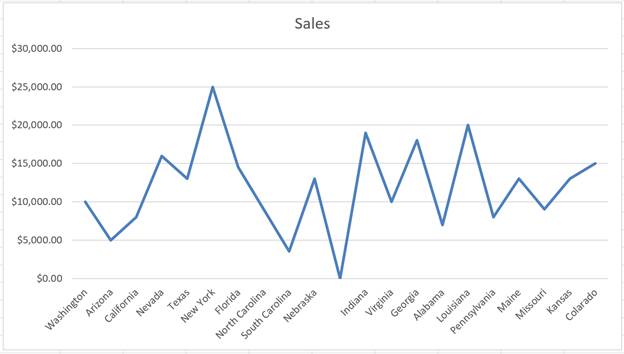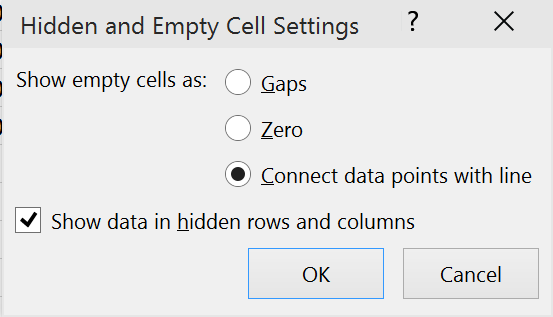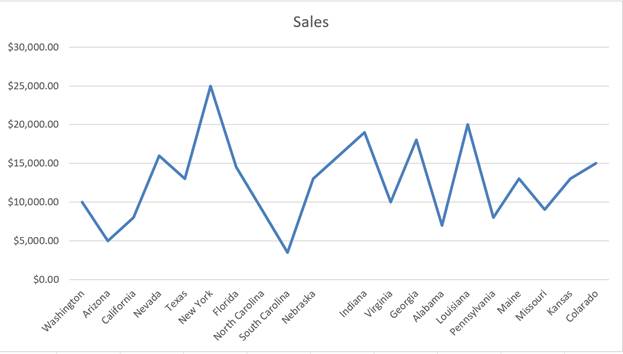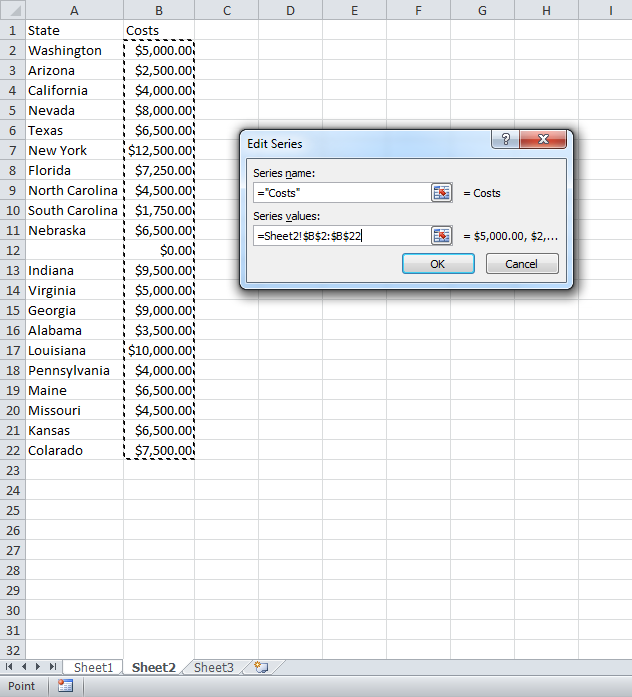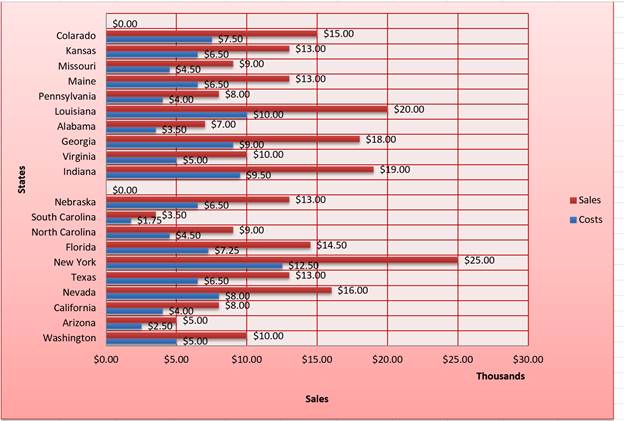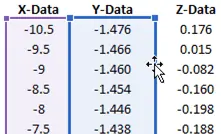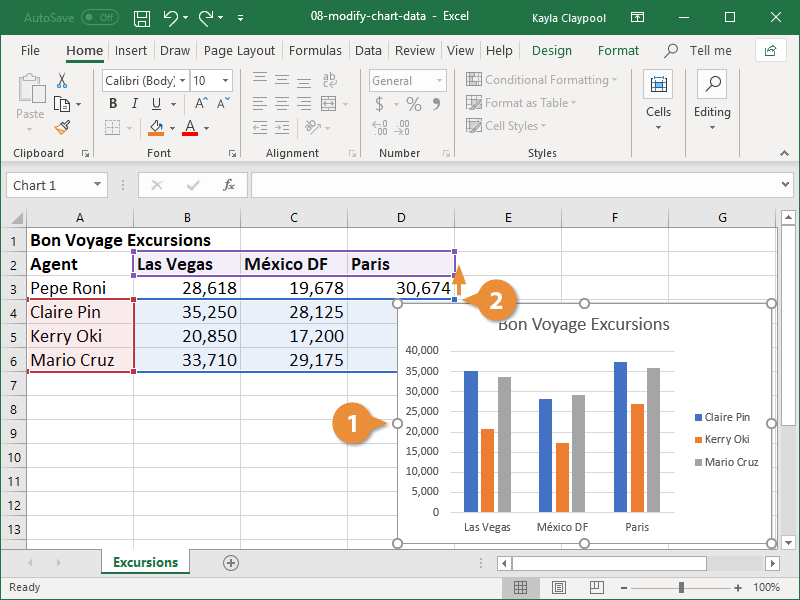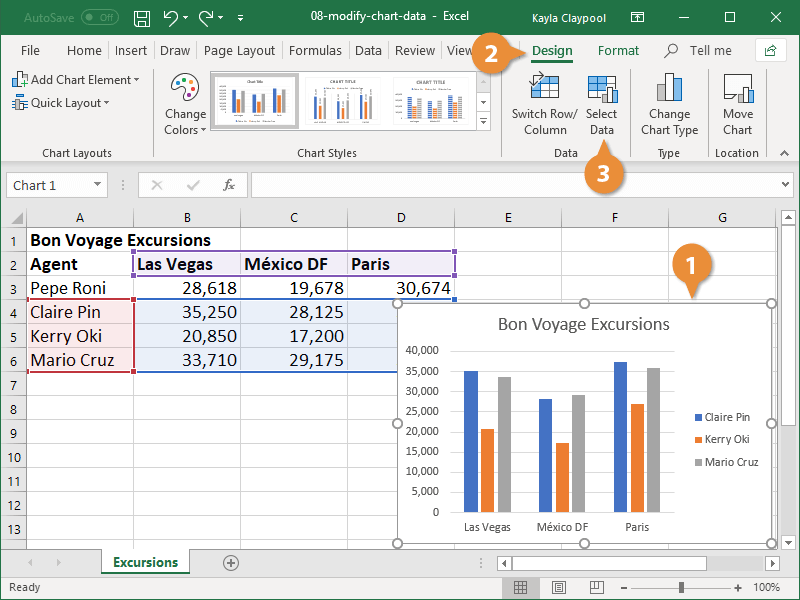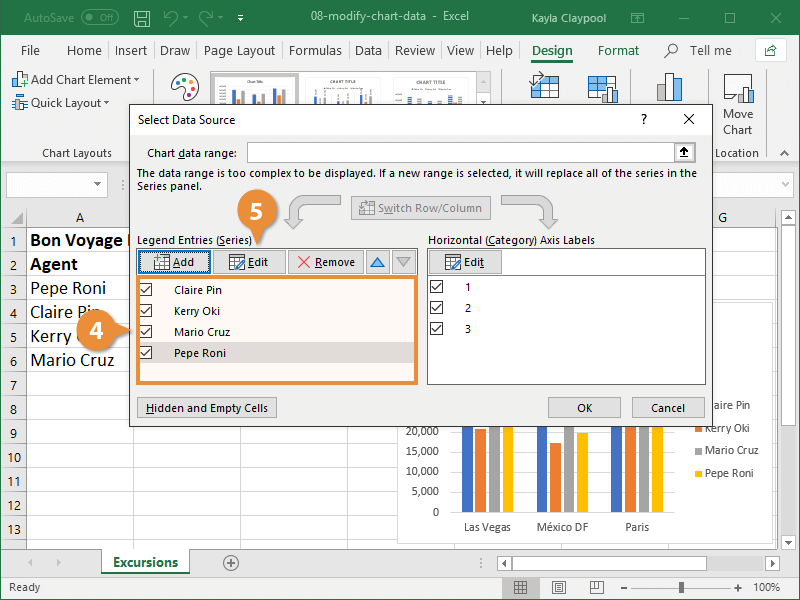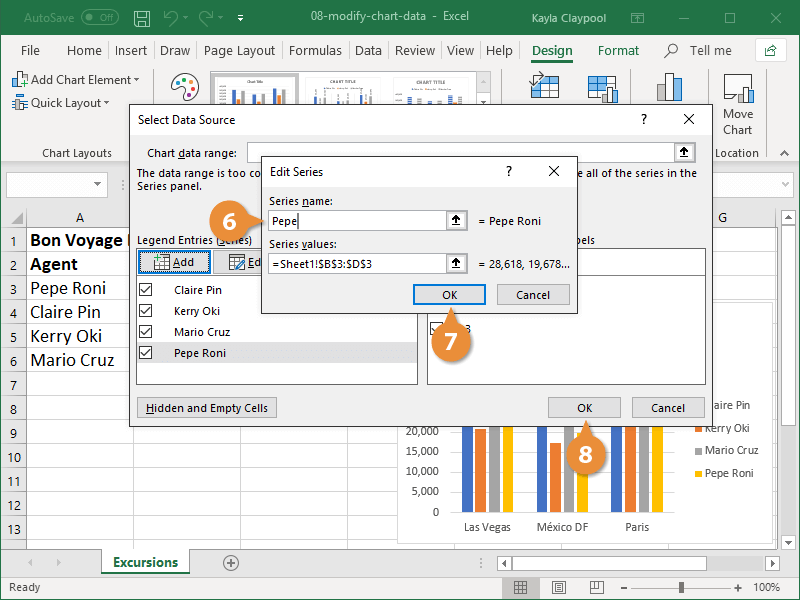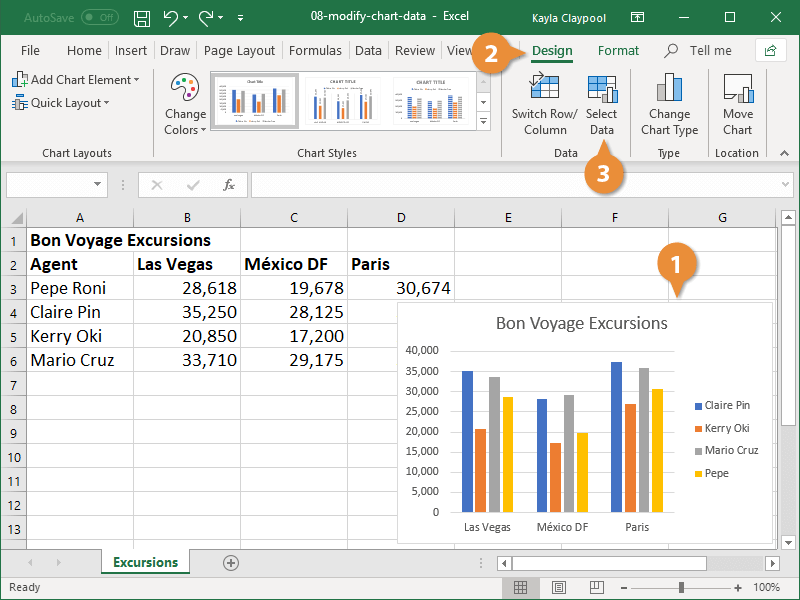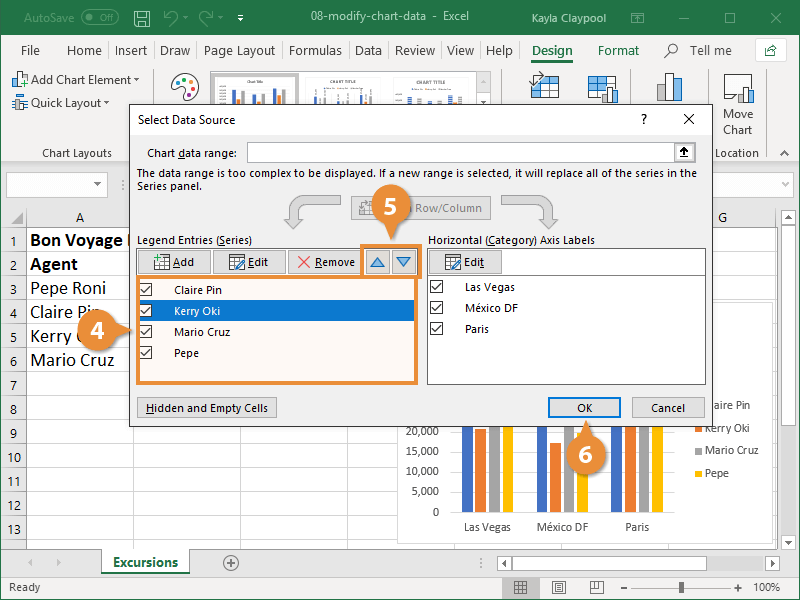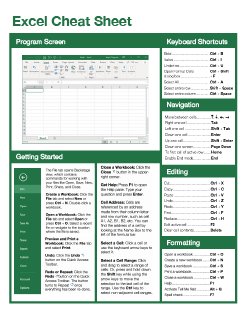Try it!
Changes you make will instantly show up in the chart. Right-click the item you want to change and input the data—or type a new heading—and press Enter to display it in the chart.
To hide a category in the chart, right-click the chart and choose Select Data. Deselect the item in the list and select OK.
To display a hidden item on the chart, right-click and Select Data and reselect it in the list, then choose OK.
Try it!
You can update the data in a chart in Word, PowerPoint for macOS, and Excel by making updates in the original Excel sheet.
Access the original data sheet from Word or PowerPoint for macOS
Charts that display in Word or PowerPoint for macOS originate in Excel. When you edit the data in the Excel sheet, the changes display in the chart in Word or PowerPoint for macOS.
Word
-
Select View > Print Layout.
-
Select the chart.
-
Select Chart Design > Edit Data in Excel.
Excel opens and displays the data table for the chart.
PowerPoint for macOS
-
Select the chart.
-
Select Chart Design > Edit Data in Excel.
Excel opens and displays the data table for the chart.
Edit data in a chart
-
Select the original data table on the Excel sheet.
Notes: Excel highlights the data table that is used for the chart.
-
The gray fill indicates a row or column used for the category axis.
-
The red fill indicates a row or column that contains data series labels.
-
The blue fill indicates data points plotted in the chart.
-
-
Make changes.
Change the number of rows and columns in the chart-rest the pointer on the lower-right corner of the selected data and drag to select to increase or decrease the desired data.
Add or edit in a cell— select the cell and make the change.
Change which chart axis is emphasized
You can change the way that table rows and columns are plotted in a chart. A chart plots the rows of data from the table on the chart’s vertical (value) axis and the columns of data on the horizontal (category) axis. You can reverse the way the chart is plotted.
Example:
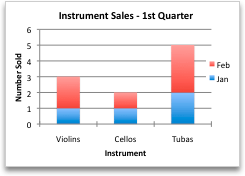
Emphasizing sales by instrument
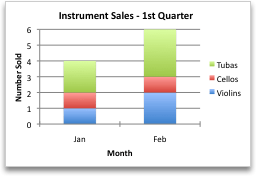
Emphasizing sales by the month
-
Select the chart.
-
Select Chart Design > Switch Row/Column.
Change the order of the data series
You can change the order of a data series in a chart with more than one data series.
-
In the chart, select a data series. For example, in a column chart, click a column, and all the columns of that data series become selected.
-
Select Chart Design > Select Data.
-
In the Select Data Source dialog box, next to Legend entries (Series), use the up and down arrows to move the series up or down in the list.
Depending on the chart type, some options may not be available.
Note: For most chart types, changing the order of the data series affects both the legend and the chart itself.
-
Select OK.
Change the fill color of the data series
-
In the chart, select a data series. For example, in a column chart, click a column, and all the columns of that data series become selected.
-
Select Format.
-
Under Chart Element Styles, select Shape Fill
and choose the color.
Add data labels
You can add labels to show the data point values from the Excel sheet in the chart.
-
Select the chart, and then select Chart Design.
-
Select Add Chart Element > Data Labels.
-
Select the location for the data label (for example, select Outside End).
Depending on the chart type, some options may not be available.
Add a data table
-
Select the chart., and then click the tab.
-
Select Chart Design > Add Chart Element > Data Table.
-
Select the options.
Depending on the chart type, some options may not be available.
Charts in Microsoft Excel enable you to display data in a way that has the most possible impact on your audience. Apart from displaying, it helps the audience to understand the data well and helps them to read the data correctly. Charts can be of many types like Pie charts, Bar charts, Scatter charts, Hierarchy charts, and so on. Every chart serves a specific purpose and helps to understand the relevant data.
Steps to Update, Change and Manage Data Used in a Chart in Excel
The example is performed on MS Excel 2016. All the functionalities will be there in the later or backward versions of Excel but the function place can change.
For Example, We are using the example to perform the desired operations.
Update Chart Values
Step 1: When the chart was created, select the extra rows to update the chart values as desired. In the image below, the data is till cell C11, but I’ve selected till C14 to help to add more values to the chart. The chart of the selected data will look the same as taken in the example.
Step 2: Create the chart. Go to Insert> Charts and select Bar Chart.
Step 3: Now, in cell B12, add any programming language of your choice and add the number of enrolled students. The chart will automatically update and you’ll see the added language and number of enrolled students (as shown below).
Change Chart Values
From the dataset, change the data from any cell(which has some data in it). You can change the number of Enrolled Students or change any programming language. You can also change the case of the programming language into the desired format. Here, I’m changing the enrolled student’s value of the CIP course, and the results are shown below.
Manage Chart Data
You can manage the chart data by removing any column from the chart, adding a trendline to the chart, displaying the axis title, data label, and so on. Here, we’ll add the Trendline to the chart, and remove and add an entry.
Step 1: Click on the chart area and a menu bar will appear in the corner of the chart (as highlighted).
Step 2: Click on the “+” sign and another menu will open that bears the name “Chart Elements“.
Step 3: Click on the Trendline checkbox and you’ll see a trendline on the chart.
Similarly, if you want to add an Error Bar, Data Table, and Legends to your chart. Steps to remove and add entries from the chart.
Step 1: Right-click on the chart area and a drop-down will appear (as shown below). Right, Click on Select Data.
Step 2: A dialogue box will appear as shown. Uncheck the check box along with the language name and the bar corresponding to that language will disappear from the chart. Here, the checkbox along with C++ is unchecked. and then click OK.
Step 3: The resulting chart is shown below.
Similarly, you can perform the operation of adding a chart bar.
In this tutorial I am going to show you how to update, change and manage the data used by charts in Excel.
This tutorial is split up in order to breakdown the Select Data Source window into small and easy to understand parts. To edit the data selection of a chart, right click the chart and select the Select Data option — or select the chart, go to the Design tab, and click the Select Data button from the left side of the ribbon menu.
From now on the tutorial will discuss features from this pop-up window:
How to Change the Data Used in a Chart
To change the data used in a chart, clear the current data reference in the Chart data range box at the top of the window (click the button to the right of the box to minimize the window if required) then select your new data. In the previous tutorial I only had 10 items for my chart. I will now expand this with a new selection:
Then click ok to update the chart:
How to Add Data to a Chart in Excel
To add another data series to your chart, simply click the Add button. The following window will open:
This allows you to select a new series name and a reference to the cells which contain the new series data. Click ok to update the chart:
How to Remove Data from a Chart in Excel
To remove a data series, select it then click the Remove button. For example I am going to remove the data series I just added:
Then click ok to update the chart.
Note: I have added the Costs data series back in for the rest of the tutorial.
How to Edit Data in a Chart in Excel
To edit a data series, select it then click the Edit button under the Legend Entries section. The following window will open allowing you to change the series name and referenced data:
How to Move Data Series Up/Down in Excel
To move a series up and down, select it then click the up/down arrows to rearrange. So for example I am going to move the Costs data series up:
Then click ok to update the chart:
Notice how the bars have swapped round.
Switching Rows/Columns in Charts in Excel
Switching the Row/Column of your data can come in handy if data in a worksheet has a poor layout. It can also give you an alternative layout for your chart, which may be better depending on how you plan on using your chart. Basically what this feature does is swap your Legend Entries (Series) round with your Horizontal Axis Labels (Category). This only works with 1 data series so I have removed Costs for this example:
Here is how the Select Data Source window looks before:
I then click the Switch Row/Column button, then ok to update the chart.
Notice how the States are now my key and Sales is on my Y-axis and the Legend Entries / Horizontal Axis Labels are swapped round:
Editing the Horizontal Axis labels for a Chart in Excel
To edit the Horizontal Axis Labels, click the Edit button under the Horizontal Axis Labels section. This allows you to choose different labels for your charts data if you need to, just make sure the new selection is the same as the old one so all of your data will have labels.
The following window will open allowing you to edit the cell references for the labels:
Hidden and Empty Cells in Charts in Excel
If youve looked at the accompanying Excel workbook, you may have noticed that the source data for my chart has an empty row and a few hidden cells. To edit how a chart interprets such cells, click the Hidden and Empty Cells button in the bottom left corner of the window. This will open the following pop-up:
To include hidden cells, ensure the Show data in hidden rows and columns checkbox is checked.
Click ok to update the chart and it will now include the data I have hidden between rows 14:20.
For bar/column charts, empty cells will always be displayed as gaps. In order to make use of these options I have inserted a new line chart for the same data:
The default option for empty cells is Gaps. This leaves a gap between data entries as you can see above. If you change this to show Zero for empty cells:
The line chart now goes down to 0 for the empty cells. For this example this is between Nebraska and Indiana.
Now if you change this to the last option, Connect data points with line, instead of going down to Zero for empty cells, a line is drawn over the gap between the last 2 data points that werent empty:
How to Use Data from Another Worksheet for a Chart in Excel
It is worth noting that you can select data from another worksheet within the workbook and not just from within the same worksheet.
To demonstrate this, I am going to change the Costs data series to take a different set of values contained within Sheet2 instead of Sheet1.
To do this, I select the series, click the edit button and adjust the cell references as follows:
In order to select data from another sheet, select the desired sheet first and then the cell range you require. Click ok and then the chart will update:
Once youve done that, youve basically done almost everything with Data in Charts in Excel that you will ever need to do. This tutorial should get you going for just about all of your charting data related needs and, if it doesnt, make sure to check out our other tutorials!
Similar Content on TeachExcel
Highlight, Sort, and Group the Top and Bottom Performers in a List in Excel
Tutorial:
How to highlight the rows of the top and bottom performers in a list of data.
This allows…
Loop through a Range of Cells in a UDF in Excel
Tutorial:
How to loop through a range of cells in a UDF, User Defined Function, in Excel. This is …
Show All Formulas in a Worksheet in Excel
Tutorial:
Display all formulas instead of their output values.
This allows you to quickly troubles…
How to Create and Manage a Chart in Excel
Tutorial: In this tutorial I am going to introduce you to creating and managing charts in Excel. Bef…
Create and Manage Tables in Excel
Tutorial:
Here, I’ll show you everything you need to know to get started using tables in Excel; how…
FV Function — Get the Future Value in Excel
Tutorial:
The Future Value function (FV) in Excel will return the future value of an investment ba…
Subscribe for Weekly Tutorials
BONUS: subscribe now to download our Top Tutorials Ebook!
At some point, you may need to change data that’s already plotted in an XY scatter chart. In our worksheet, we have the data from the previous section already plotted, but there’s an additional column of data in column D. In this section, we’ll look at three ways to change the chart to use the new column as Y data instead of the old data.
For the first method, right-click anywhere in the chart area and choose Select Data. The Select Data Source window will appear:
Note that the Chart data range contains the B and C column ranges, and that the chart contains one series, shown in the box at lower left. Click the Edit button just above that series to edit the input data.
You may enter a Series name by clicking inside the first box, then selecting the header for column D, but this is optional.
The X values should remain the same. To edit the Y values, select the entry in the third box, and delete it. Select the new data (click in cell D3 and drag down to the end of the column). Click OK. Note that the series has been updated with the new name from cell D2. Click OK again, and you’ll see that the chart now shows a sine wave.
Another way to edit the data shown in the chart is to left-click on the data displayed in the chart. The data columns for the curve will become highlighted. Hover the mouse over the border of the Y Data until the mouse pointer changes to a pointer with four arrows:
Click and drag over to the Z-Data column. This will move the selection, and the chart will update.
The last method to edit the series is through the formula bar. Left-click on the curve in the chart. If you look at the formula bar, you’ll see it’s referencing column B for the X data and column C for the Y data:
Simply change the “C”s to “D”s and the chart will update accordingly.
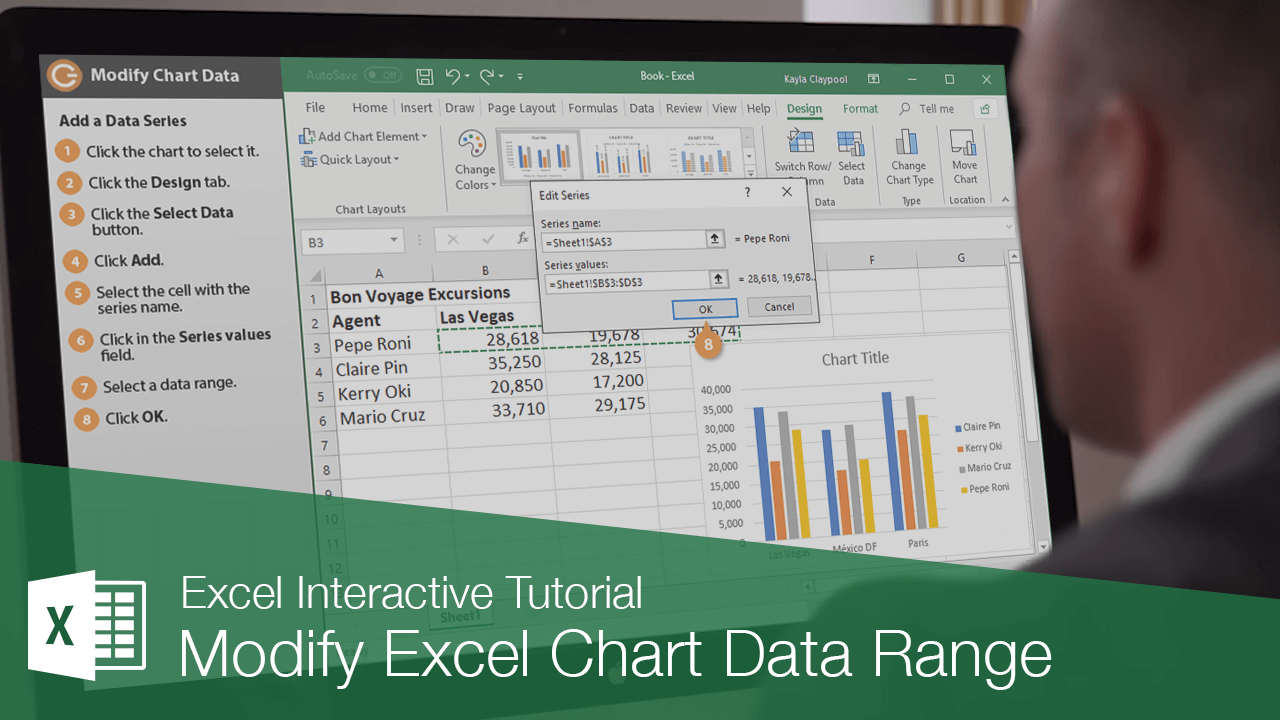
Once you see data in a chart, you may find there are some tweaks and changes that need to be made. Here are a few ways to change the data in your chart.
Add a Data Series
If you need to add additional data from the spreadsheet to the chart after it’s created, you can adjust the source data area.
- Select the chart.
- In the worksheet, click a sizing handle for the source data and drag it to include the additional data.
The new data needs to be in cells adjacent to the existing chart data.
Rename a Data Series
Charts are not completely tied to the source data. You can change the name and values of a data series without changing the data in the worksheet.
- Select the chart
- Click the Design tab.
- Click the Select Data button.
- Select the series you want to change under Legend Entries (Series).
- Click the Edit button.
- Type the label you want to use for the series in the Series name field.
- Click OK.
- Click OK again.
The name is updated in the chart, but the worksheet data remains unchanged.
Reorder a Data Series
You can also change the order of data in the chart without changing the order of the source data.
- Select the chart
- Click the Design tab.
- Click the Select Data button.
- From the Select Data Source dialog box, select the data series you want to move.
- Click the Move Up or Move down button.
- Click OK.
The chart is updated to display the new order of data, but the worksheet data remains unchanged.
FREE Quick Reference
Click to Download
Free to distribute with our compliments; we hope you will consider our paid training.


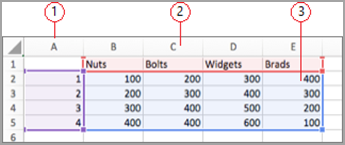
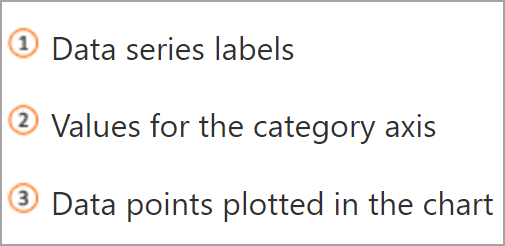
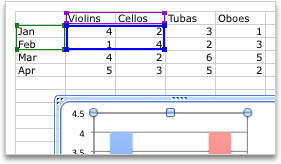
 and choose the color.
and choose the color.











